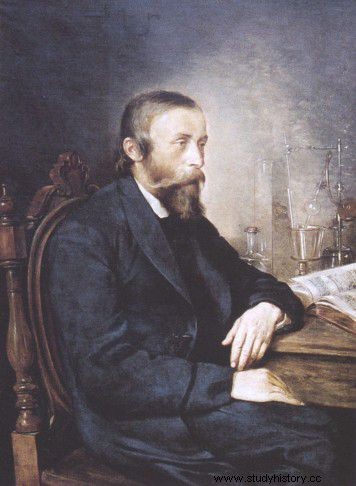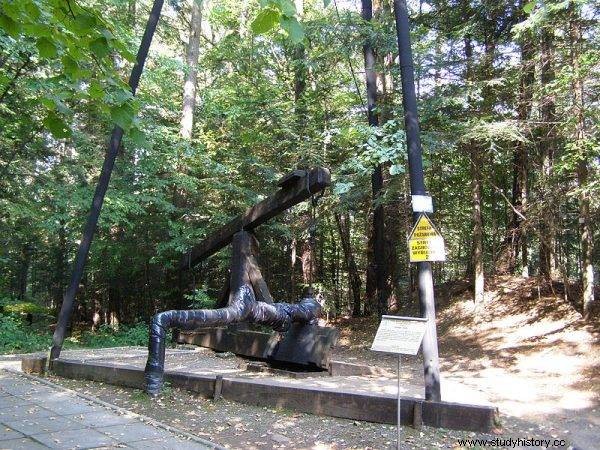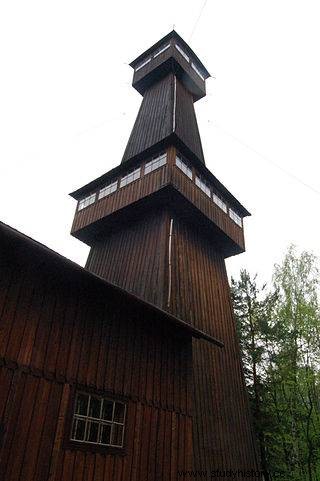The oldest oil well in the world is located in the village of Bóbrka - in the Podkarpackie Province, Krosno County. It was excavated by hand in 1854. The pioneers of the oil industry and the founders of the mine in Bóbrka were:Ignacy Łukasiewicz, Tytus Trzecieski, and Karol Klobassa-Zrencki.
Oil from Podkarpacie
The forests near the village of Bóbrka were known for their oily soils as early as in the Middle Ages. For centuries, local farmers collected the so-called the rock oil that appeared there and they used it to heal cattle or to lubricate the axles and wheels. In 1854, the three men mentioned in the introduction began the industrial extraction of oil. Two years later, the company was established on the basis of an oral agreement. The partners shared the roles:Trzecieski was responsible for the financial background; Klobassa-Zrencki donated the land, and Łukasiewicz - by the way the inventor of the kerosene lamp - became the manager of the company and shared his knowledge with his colleagues.

Ignacy Łukasiewicz
Initially, the oil accumulated in a 120-meter drainage ditch. Later, holes were drilled to a depth of up to 150 meters by hand. In the years 1854-1880 about 60 drilling facilities were built. At that time, more than 100 employees, mainly from the surrounding towns, produced about 230 wagons of oil annually. In 1858 the "Małgorzata" shaft produced 4,000 liters a day. The "Franek" and "Janina" excavations, seen today, were built around 1860. Over time, the strength of human hands was replaced by a steam engine, which allowed to dig up to a depth of 240 meters.

The "Franek" and "Janina" excavations, which are seen today in the open-air museum, were built around 1860
In 1871 Klobassa-Zrencki took over the shareholders' shares and became the sole owner of the complex. Crude oil from Bóbrka was of good quality. She was appreciated all over the world. This is largely due to Łukaszewicz, who still managed the company as an employee. But not only. The pharmacist not only "processed" the product, he also advertised it, sold it, and perfected the method of its extraction. Unfortunately, he died in 1882, and this event ended the founding phase of Polish oil extraction and processing. After the death of Łukasiewicz, Adolf Jabłoński became the mine director, and then Zenon Suszycki. The mine in Bóbrka survived the wars and in the 1950s it experienced another revival, when a new oil field was discovered in the southern fold of the anticline.
Museum
The idea of creating an open-air museum was born in the interwar period. However, the plan was not implemented until the 1960s. In September 1962, an article about the open-air museum was published in Nowiny Rzeszowskie. We read in it:
"At present, in Krosno, extended assumptions for the construction of an open-air museum in the historical development of drilling and exploitation of oil and gas fields are being developed. Although they are not yet buttoned up, we can already report that the wanderer will see in Bóbrka all types of drilling equipment (there will be eight of them) and operating equipment, naturally from the oldest to the newest type. (...) In 1963, Bóbrka will host, among others, the first prototype of a canoe, a canoe-polish crane, a rope-rod drilling device and others. "

Wooden crane of Polish-Canadian construction.
In 1967, the existing buildings and drilling platforms were restored. In 1977 and 1978, additional land was purchased for the expansion of the plant. On December 10, 2018, at a gala organized by the Chancellery of the President of the Republic of Poland at the National Theater, Bóbrka - the oldest crude oil mine received the title of Monument of History. The museum in Bóbrka, which was established as the first in the world, is trying to be entered on the UNESCO list.
